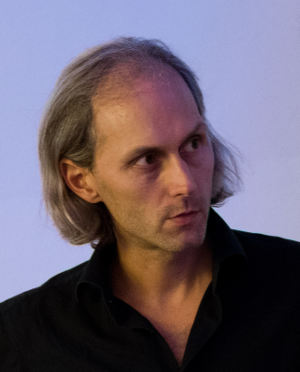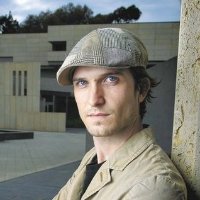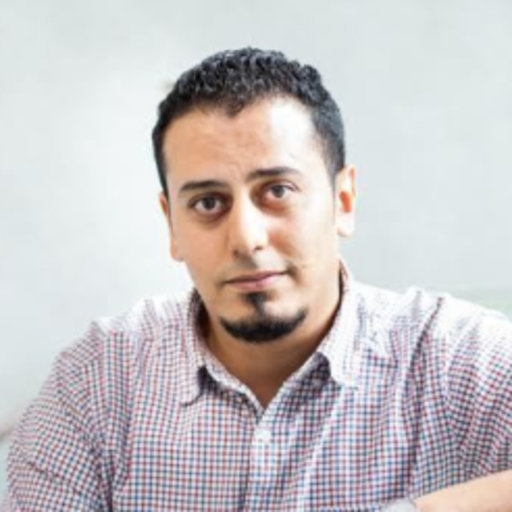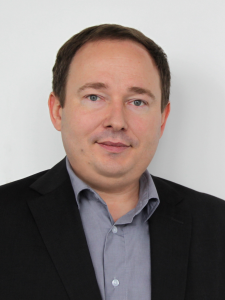IEEE BRAIN WINNER
Salut - A ECoG Hand Pose Data Analysis Project
Team members: Alexey Timchenko, Alexander Kovalev, Kalimullin Ruslan
Project description: Predicting coordinates of the fingers based on ECoG signal.
IEEE SMC WINNER
A motormouth brain - A Robot Control Project
Team members: Khalil Alblooshi, Ahmed Sheimy, Mohammed Abduljabbar
Project Description: The team used the Unicorn Speller to make a humanoid robot talk.
INTHEON WINNER
Braini(h)acks - A Smart Home Project
Team members: Anita Vrins, Caterina Ceccato, Ethel Pruss, Jos Prinsen
Project Description: The team used P300 to navigate and complete tasks in a virtual home
HOSTING INSTITUTIONS
Universities who are proud owners of the Unicorn Education Kit automatically qualify as hosting institution. Official hosting institutions are fully embedded in The BCI & Neurotechnology Spring School and, of course the BR41N.IO Designers' Hackathons. Boost your institution’s visibility and awareness and benefit from a big audience.
Hosting institutions provide on-site access to EEG devices and brain-computer interface technology that you would need for programming projects. Just let us know at which hosting institition you would like to participate during the BR41N.IO Hackathon.
TILBURG UNIVERSITY
Department of Cognitive Science & AI
Prof. Maryam Alimardani
Tilburg, Netherlands
AALBORG UNIVERSITY
MeCIS Media Cognition & Interactive Systems
Prof. Luis Emilio Bruni & Hossein Dini
København , Denmark
AALBORG UNIVERSITY
Augmented Cognition Lab
Prof. Luis Emilio Bruni & Hossein Dini
København , Denmark
G.TEC
AUSTRIA
g.tec medical engineering GmbH
Dr. Christoph Guger
Schiedlberg, Austria
UAE UNIVERSITY
ABU DHABI
United Arab Emirates University
Prof. Abdelkader N. Belkacem
Abu Dhabi, United Arab Emirates
MLJC
ITALY
Machine Learning Journal Club
Arianna Di Bernardo, Enrico Sansone
Turin, Italy
DIGITALE MANUFAKTUR
Medienwerkstatt Collective
Mariana Carranza
Coburg, Germany
SIMON FRASER UNIVERSITY
School of Engineering Science
Communication Networks Laboratory
Vancouver, Canada
ROCHESTER INSTITUTE OF TECHNOLOGY
Electrical and Microelectronics Engineering Department and NeuroTechnology Exploration (NXT) Club
Prof. Ferat Sahin
Rochester New York, USA
JURY
SCHEDULE
Time Zone: Vienna CEST Central European Summer Time (UTC+02:00)
Sunday, October 17
| 10:00–10:30 | Welcome |
| 10:30–11:00 |
Current and Future Applications of Christoph Guger, g.tec medical engineering |
| 11:00–11:30 |
How to run a Real-Time BCI Application Leo Schreiner, g.tec medical engineering |
| 11:30–12:00 |
Unicorn Brain Interface Demonstration Leo Schreiner, g.tec medical engineering |
|
12:00–12:20 |
LSL and NeuroPype Tools and BCI Applications Tim Mullen, Intheon |
| 12:20-12:40 |
Data Analysis Projects |
| 12:40-13:00 |
Group formation and START BR41N.IO Christoph Guger, g.tec medical engineering |
| 15:00-15:30 |
BCIs for Replacement and Restoration of Lost Motor Function in Patient Populations Natalie Mrachacz-Kersting, Albert-Ludwigs Universität Freiburg, Germany |
| 16:00-17:00 | Panel: BMIs |
|
18:00–18:30 |
More than Play: Challenges and Benefits Driving BCI for Kids Eli Kinney-Lang |
| 18:30-19:00 | VFC Project: An Adaptive BCI Cinema Experience Charles S. Roy, Antoine Bellemare Pépin, Yann Harel, Felipe Almeida |
| 19:00 | BR41N.IO HACKING |
Monday, October 18
| 6:00 | START BR41N.IO |
| 10:00-10:30 |
Passive BCIs for Enhancement and Learning with Technology Maryam Alimardani, Tilburg University |
| 13:00–13:30 |
NeuroTechX - The International NeuroTech Community Yannick Roy, NeuroTechX |
| 14:00 | END BR41N.IO |
| 15:00–17:00 | BR41N.IO Project Presentations |
| 17:00–17:30 | Meeting Hackathon Jury |
| 17:30–18:00 |
BR41N.IO Winners Ceremony Ljiljana Trajkovic, IEEE Director and SMC Award Chair |
Tuesday, October 19
| 13:00–13:45 |
Injectable and Wearable Neural Interfaces Douglas J. Weber, Carnegie Mellon University, USA |
| 14:00–17:00 |
BCI Award 2021 Presentations & Ceremony
|
BCI PRINCIPLES
Brain-computer interfaces are realized by 4 different principles:
slow waves
steady-state visual evoked potentials (SSVEP)
motor imagery (MI)
evoked potentials (EP)
In the BR41N.IO Hackathon Series, motor imagery and EP based systems
are mostly used to control the applications:
In the case of the motor imagery application, participants have to imagine e.g. left or right hand movement to produce an event-related desynchronization over the sensorimotor cortex. This is basically an amplitude change of the alpha and beta regions of the EEG.
In the case of EPs, the BCI system is showing different flashing icons and the user has to attend to the icon he wants to select. When the icon flashes on the computer screen, than a P300 wave is produced in the brain and the BCI system is able to detect it.
PROGRAMMING PROJECTS*
*These projects require a Unicorn Hybrid Black, a Unicorn Naked BCI (available at hosting institutions) or use your own BCI system.
Unicorn Speller: Smart Home
The Unicorn Brain Interface comes with the Unicorn Speller application that is using P300 paradigm to control electronic devices such as lamps, radios or television. Watch the video Unicorn Speller Smart Home.
soft-/hardware: Unicorn Hybrid Black, Unicorn Speller, domestic electronic devices
participants: 2 groups, 3-5 people per group
skills: basic programming skills (Matlab, Simulink)
Unity Rehab
Create a Unity based game that can be used for rehabilitation purposes.
soft-/hardware: Unicorn Hybrid Black, Unicorn Naked BCI, Unity
participants: 4 groups, 3-5 people per group
Skills: Basic programming skills (Matlab, Simulink), Basic graphics programming with Unity
Unity Games
Create your own Unity game that can be controlled with a brain-computer interface.
soft-/hardware: Unicorn Hybrid Black, Unicorn Naked BCI, Unity
participants: 4 groups, 3-5 people per group
Skills: Basic programming skills (Matlab, Simulink), Basic graphics programming with Unity
Your Hacking Project
You are invited to create your own programming project for this hackathon. You'll have all the BCI headsets or you bring your own BCI to design and program your own fully functional headset.
soft-/hardware specifications: Unicorn Hybrid Black, Unicorn Naked BCI, EEG device
participants: 2 groups, 3-5 people per group
skills: Basic programming skills
Dream Painting
If you want to create a Dream Painting, you have to wear a Unicorn Brain Interface while you sleep. When you wake up, you are able to create a picture based on EEG signals.
soft-/hardware: Unicorn Hybrid Black, Unicorn Speller
participants: 2 groups, 3-5 people per group
skills: Basic programming skills (Matlab, Simulink)
fNIRS and EEG Control
The team can use fNIRS (functional near-infrared spectroscopy) and EEG simultaneously to control BCI applications.
soft-/hardware: g.Nautilus fNIRS
participants: 1 group, 3-5 people per group
skills: Basic programming skills (Matlab, Simulink)
Sense & Stimulate the Brain
Stimulate the brain with tDCS to increase or mental performance and measure brain activity with EEG at the same time with the Unicorn Hybrid Black environment.
soft-/hardware specifications: g.tec's Brain Stimulator, your own tDCS device
participants: 1 groups, 3-5 people per group
skills: Basic programming skills (Matlab, Simulink, C#)
swarm::swann
Control a digital animation and create a sound space with brain impulses, using the Unicorn Hybrid Black for EEG data acquisition.
Animation and sound space will be part of a site installation open to the public.
soft-/hardware specifications: Unicorn Hybrid Black, Unicorn Naked BCI, Processing, Ableton, Sonic Pi (or own Digital Audio with link possibility)
participants: 3 groups, 3-5 people per group
programming skills: Python, Java, BrainFlow API, UDP
audio & visual programming skills: Processing, Digital Audio, Parikel System
Unicorn Sphero
The Unicorn Hybrid Black offers the Unicorn Speller application that allows you to control a robotic ball called Sphero. Watch the video Unicorn Sphero.
soft-/hardware: Unicorn Hybrid Black, Unicorn Speller, Sphero robot
participants: 2 groups, 3-5 people per group
skills: Basic programming skills (C#)
Orthosis Control
It is possible to control a 3D printed orthosis using a Unicorn Hybrid Black with motor imagery. It is possible to move an orthosis by thinking about left or right hand motion. Watch the Orthosis Control video.
soft-/hardware: Unicorn Hybrid Black, Unicorn Speller, bring your own orthosis or use Unity instead
participants: 2 groups, 3-5 people per group
Skills: Basic programming skills (Matlab, Simulink), basic graphics programming skills with Unity
Flight Control
The Unicorn Hybrid Black comes with the Unicorn Speller which allows you to fly your own drone with the brain only.
soft-/hardware: Unicorn Hybrid Black, Unicorn Speller, bring your own drone or use Unity instead
participants: 2 groups, 3-5 people per group
skills: Basic programming skills (Java)
DATA ANALYSIS PROJECTS*
*no hardware required.
Stroke Rehab Data Analysis
Analyze a motor imagery BCI data-set from a chronic stroke patient in order to optimize pre-processing, feature extraction and classification algorithms. Compare your results with state-of-the-art algorithms.
soft-/hardware: MATLAB or other signal processing platform that is able to read in the MATLAB matrix
participants: 3 groups, 3-5 people per group
skills: signal processing skills
P300 Speller Data Analysis
Analyze a visual P300 BCI data-set from a healthy person in order to optimize pre-processing, feature extraction and classification algorithms. Compare your results with state-of-the-art algorithms.
soft-/hardware: MATLAB or other signal processing platform that is able to read in the MATLAB matrix
participants: 3 groups, 3-5 people per group
skills: signal processing skills
Unresponsive Wakefullness Syndrom Data Analysis
Analyze a vibro-tactile P300 BCI data-set from a patient with disorders of consciousness in order to optimize pre-processing, feature extraction and classification algorithms. Compare your results with state-of-the-art algorithms.
soft-/hardware: MATLAB or other signal processing platform that is able to read in the MATLAB matrix
participants: 3 groups, 3-5 people per group
skills: signal processing skills
SSVEP Data Analysis
Analyze an SSVEP BCI data-set from a healthy person in order to optimize pre-processing, feature extraction and classification algorithms. Compare your results with state-of-the-art algorithms.
soft-/hardware: MATLAB or other signal processing platform that is able to read in the MATLAB matrix
participants: 3 groups, 3-5 people per groupskills: signal processing skills
Locked-in Patient Data Analysis
Analyze a vibro-tactile P300 BCI data-set from a patient with locked-in syndrom in order to optimize pre-processing, feature extraction and classification algorithms. Compare your results with state-of-the-art algorithms.
soft-/hardware: MATLAB or other signal processing platform that is able to read in the MATLAB matrix
participants: 3 groups, 3-5 people per group
skills: signal processing skills
ECoG Hand Pose Data Analysis
Analyze an ECoG BCI data-set from an epilepsy person in order to optimize pre-processing, feature extraction and classification algorithms. Compare your results with state-of-the-art algorithms.
soft-/hardware: MATLAB or other signal processing platform that is able to read in the MATLAB matrix
participants: 3 groups, 3-5 people per group
skills: signal processing skills
ARTISTIC PROJECTS*
*these projects require sewing machines, 3D printers, painting or crafting materials.
Unicorn Painting
Create images according to your brain activity that you measure with the Unicorn Brain Interface.
soft-/hardware: Unicorn Hybrid Black, Unicorn Painting
participants: 2 groups, 3-5 people per group
Design Unicorn Brain Interface with 3D Printers
Expand the Unicorn Brain Interface with your own 3D printed parts. Let them move, light, hold things or simply look nice. Watch the video 3D Headset Design.
soft-/hardware: 3D printer, 3D freeware
participants: 2 groups, 3-5 people per group
Skills: Basic CAD
Design Unicorn Brain Interface with Sewing Machines
Give the Unicorn Brain Interface a new, fashionable look.
soft-/hardware: Sewing machines, fabrics and handicraft material
participants: 10 people
SPONSORS
Join the IEEE community of more than 400,000 technology and engineering professionals united by a common desire to continuously learn, interact, collaborate, and innovate!












